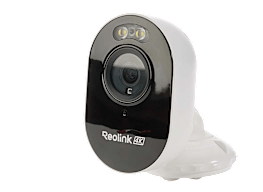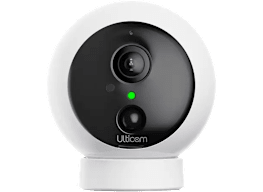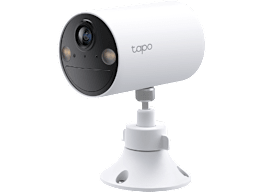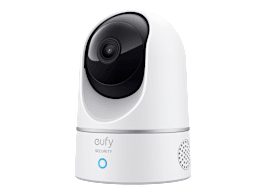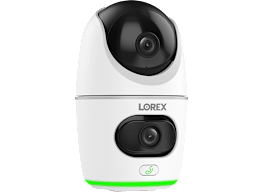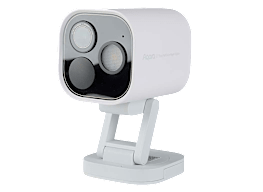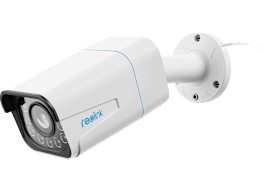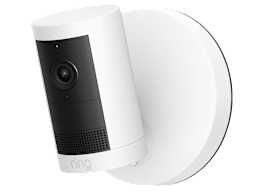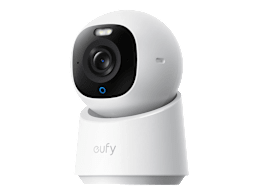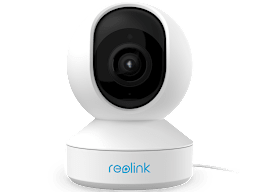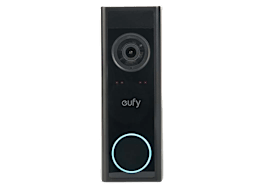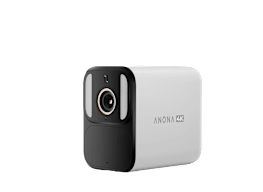
Home Security Camera Buying Guide

Senior Home & Appliances Writer
It has never been easier to keep an eye on your home, thanks to the ever-expanding number of connected home security cameras on the market. These streaming video cameras connect to your WiFi network to send alerts, video clips, and live video feeds to your smartphone, allowing you to monitor activity while you’re away. Many models even feature built-in spotlights or floodlights to shine a light on intruders.
In this home security camera buying guide, we’ll explore the different types of security cameras, their benefits and limitations, and how Consumer Reports tests them for video quality, data security, data privacy, and other characteristics in our labs. We’ll also look at the latest trends and some of the common features you’ll come across while shopping for a home security camera, as well as the best time of year to purchase one.
Also check out our picks for the best wireless home security cameras, the best doorbell cameras, the best home security cameras without a subscription, the best doorbell cameras without a subscription, the best outdoor security cameras, and the best floodlight cameras. CR digital members can also dive into our full ratings of home security cameras, with reviews of over 160 models.
Your Security Camera Options
Home security cameras are usually DIY devices, meaning you set up and monitor them yourself rather than hiring a security company to do the work and the watching. While this can save you from installation and monitoring fees, you generally forgo a 24/7 response team and have to self-monitor through alerts and video feeds that pop up on your phone. But some security camera makers, such as Ring and SimpliSafe, offer professional monitoring services for their cameras, where agents check for intruders if the cameras detect motion and can notify the police. Our home security system ratings feature many systems with optional professional monitoring.
Most home security cameras are either wireless security cameras or video doorbell cameras. Wireless security cameras connect to WiFi and can be plugged in for power or run off a rechargeable battery. (The term “wireless” in the name refers to WiFi, not the power supply.) Some models also work with or incorporate small solar panels, which can charge a camera during the day to keep its battery from dying.
Doorbell cameras offer all the features of a wireless security camera while also alerting you if someone rings the doorbell. They do double duty: If you have a video doorbell, you probably don’t also need a wireless security camera watching the front door. And because most traditional doorbells run on low-voltage wiring, there’s a steady stream of power available for a doorbell camera.
In addition to wireless security cameras and doorbell cameras, a third type of home security camera has begun to grow in popularity: floodlight security cameras. As the name implies, these devices combine a wireless security camera with bright lights for use at night, with the unit typically connected to a constant power source.
Most cameras we test, from any of these categories, don’t deliver the high-definition video quality their manufacturers promise under all conditions. And many models require you to pay monthly fees for some of the most important features, such as cloud video storage and activity zones (the ability to focus on or ignore motion within a designated area of the camera’s field of view).
But a security camera can still provide peace of mind, for example, by letting you see that your kids arrived home safely from school, the dog walker showed up as scheduled, or a package was delivered. And companies keep making these cameras smarter through software updates that add new features, such as package detection, facial recognition, and AI video search.
Types of Home Security Cameras
There are three main types of home security cameras: wireless security cameras, doorbell cameras, and floodlight cameras. Here are the differences.
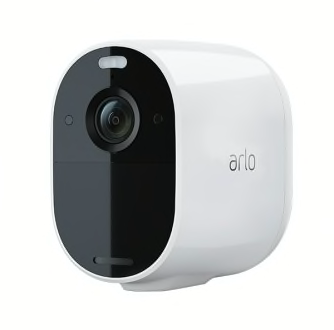
Wireless Security Cameras
These unobtrusive security cameras connect to your home WiFi network and send alerts and videos to your smartphone. Some models need to be plugged into an outlet, and others run on rechargeable batteries, making them truly wireless. Certain cameras can store video clips locally on a memory card, but many don’t have that feature, forcing you to store them in the cloud—and allowing manufacturers to charge you a recurring fee.
Pros: They can be placed just about anywhere inside your home. Weatherproof models can be placed outdoors. You can check on your home and receive smartphone alerts from anywhere with cell service or WiFi.
Cons: Cloud storage fees add up over time. Some smart features may require a monthly fee.
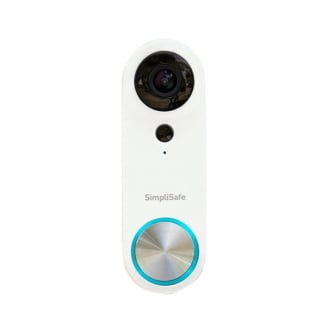
Video Doorbell Cameras
Doorbell cameras are really just security cameras that happen to be built into a doorbell. Most use low-voltage wiring from an existing doorbell for power, though some models can run on batteries, which is handy if your home lacks a wired doorbell or is a rental. Battery-powered models require periodic recharging or battery replacement. These cameras send alerts and videos to your smartphone when they detect motion or when someone rings the doorbell. All video doorbells also feature two-way audio, so you can talk to whoever is ringing. Some models come with a memory card slot for storing video clips locally, but many store video clips in the cloud, which usually requires a monthly fee for long-term storage. If you’re considering a doorbell camera, scroll down to watch our video about how to choose the best one for your needs.
Pros: Most use doorbell wiring for power, negating the need to run a separate power line. You can answer your doorbell even when you’re not home.
Cons: They won’t work with an existing wireless doorbell chime, though some may work with an existing wired chime. Their connection to your WiFi may be affected by being outside the thick walls of your home. Cloud storage fees can add up. Some smart features often require paying a monthly fee.
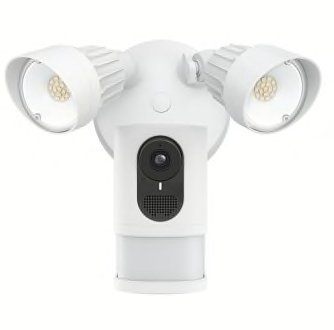
Floodlight Cameras
These devices combine a security camera with bright LED floodlights to shine a light on potential intruders and scare them off with built-in sirens. Most models are designed to replace an existing floodlight, which means you have to wire them into an electrical box. Some battery-powered and plug-in models are available, though. In addition to their sirens, most floodlight security cameras feature two-way audio for speaking with visitors. Some models also feature memory card slots or internal memory for storing footage locally, but most require a recurring fee for cloud video storage.
Pros: Because they replace regular hardwired floodlights, most floodlight cameras have a constant source of power, so you don’t need to bother with batteries. You can keep tabs on important areas around your home, such as the driveway and backyard, from anywhere with your smartphone.
Cons: Their WiFi connection may be affected by being outside the thick walls of your home. Cloud storage fees can add up. Some smart features often require paying a monthly fee.
Latest Trends in Home Security Cameras
The world of home security cameras has changed rapidly in the past decade. Speedy home internet, smaller camera sensors, and cheaper WiFi chips have helped these cameras gain mass-market appeal in a relatively short amount of time. And the arrival of artificial intelligence and large language models (LLMs) is set to change these products even more.
Lower Prices
Manufacturers are competing heavily on price. It’s now possible to get a decent security camera or doorbell camera for under $100 and a good-quality floodlight camera for under $150. Amazon-owned Blink makes a $40 outdoor security camera and a $100 floodlight camera. And TP-Link makes a $20 indoor security camera and a $50 doorbell camera. Even brands that tend to skew somewhat higher-end, such as Arlo, Google Nest, and Ring, have released wireless security cameras that cost less than $100.
More Brands Offer Local Storage
Many of these new, budget-friendly cameras allow you to store footage locally on a microSD card, avoiding the need for cloud video storage subscriptions, which have become a healthy source of recurring revenue for manufacturers. (Cloud storage subscriptions range anywhere from $1 per month to $30 per month, depending on the plan and number of cameras you use.)
Artificial Intelligence
Manufacturers have found another way to attract customers to those recurring subscriptions: artificial intelligence. A number of camera manufacturers are now adding AI-based object recognition to their subscriptions, allowing their cameras to identify people, animals, vehicles, packages, and faces. Generally, these features work by analyzing footage that the cameras upload to manufacturers’ servers and sending results back to you in real time in the form of smartphone alerts. (Some cameras, such as new Eufy and Google Nest cameras, are capable of running these algorithms locally on the camera itself or its wireless hub, but they’re the exception to the rule.) These features also have the added benefit of cutting down on nuisance alerts and recordings from animals, swaying trees, and more.
Because of LLMs like ChatGPT and Google Gemini, security camera manufacturers are now rolling out two new types of AI features: AI descriptions and AI video search. The former uses AI to describe what the camera “sees” and sends you a detailed alert message. Instead of “person detected by driveway camera,” you could receive an alert like “a person is looking inside parked cars.” AI video search allows you to use natural language to search through your cameras’ footage to quickly find what you’re looking for. Instead of scrolling through a long feed of video clips to see whether anyone let the dog outside, you can type and search “did anyone let the dog out today?” and receive a short list of video clips showing when your cameras saw Fido.
Professional Monitoring Comes to Security Cameras
As mentioned above, a few security camera makers—including Ring and SimpliSafe—now offer professional monitoring services, where trained agents check your camera feeds if motion is detected and, if there’s an intruder, alert the authorities. Ring’s offering even allows the agents to speak to intruders via the cameras’ two-way audio. But these services can cost significantly more than regular camera subscriptions and sometimes require specialized cameras or hardware.
How Consumer Reports Tests Home Security Cameras
We focus our tests on how quickly a camera sends alerts to your smartphone when motion is detected—and for video doorbells, how quickly you can see who pressed the bell—as well as its video quality, smart features, data privacy, and data security.
Last year, we updated this testing methodology to reflect changes in the technology.
Since we started testing security cameras in 2017, they have become faster at loading videos and sending notifications, so we’ve adjusted our response-time test to reflect those improvements and push manufacturers to do even better. We no longer factor smart features that require a subscription into our Smart IQ score. We also now place greater emphasis on our data security and response-time tests to help you avoid purchasing a security camera that’s slower or more susceptible to security problems than its competitors.
Here are more details on our testing.
For the response-time evaluation, we measure how long it takes for the camera to detect movement occurring in its field of view and send alerts to its smartphone app. For video doorbells, we also time how long it takes for a button press to result in a smartphone alert and, subsequently, a live video feed, which is critical if someone is waiting at your front door.
For the video-quality test, we set up a lab with multiple resolution charts, everyday objects, and mannequins as stand-ins for people, and evaluate how clear the video is from cameras in good light, low light, and zero light (to test night vision). We also add different levels of backlighting to each lighting scenario. All of these tests assess whether you would be able to clearly see people or objects in the frame. The results appear in an individual video quality score for each security camera and doorbell camera in our ratings.
When it comes to smart features, we assess a wide variety of capabilities, depending on the type of home security camera. They may include activity zones, person detection, facial recognition, voice and app control (with Amazon Alexa, Google Home, and Apple Home), smartphone alerts, two-way audio, scheduling, and geofencing (which turns alerts on and off, depending on whether the device reads that your smartphone and you, presumably, are nearby). All of these features factor into our unique Smart IQ score for smart home devices, allowing you to see which cameras are smarter than the competition.
Due to repeated hacks of wireless security cameras and the growing privacy concerns about video doorbells that record audio in public areas (such as streets and sidewalks), we test all of these cameras for data privacy and security. We evaluate each company’s or service provider’s public documentation, such as privacy policies and terms of service, to see what claims it makes about the way it handles your data. The tests include inspection of the user interface and network traffic from each camera and its companion smartphone app to make sure it’s using encryption, adhering to manufacturer policies, and not sharing your data with irrelevant third parties. Additionally, we conduct testing to see whether we can find security vulnerabilities that cybercriminals could exploit.
Finally, our test engineers take the results of these individual tests and use them to calculate our Overall Scores for both security cameras and doorbell cameras.
How to Choose a Home Security Camera
1. Choose Your Camera Type
The type of camera you’ll need depends on where you want to place it. If you want one inside your home, there are many home security camera options. If you want one outside your home, you’ll need to decide whether you want a security camera, doorbell camera, or floodlight camera.
For monitoring a front or back door, consider using a doorbell camera because it can be powered through your doorbell wiring. If you want to monitor another area of your property, you’re better off with a wireless security camera. And if you want to monitor an area that already has a hardwired floodlight, consider swapping it out with a floodlight camera. Keep in mind that while all doorbell cameras and floodlight cameras are designed to survive the elements, not all wireless security cameras are weatherproof. So be sure to check the specs of a camera you’re considering if you want to put it outside. To easily tell whether a camera is weatherproof, you can consult our security camera ratings, which include both indoor-outdoor and indoor-only models.
2. Pick Your Power Source
Battery-powered security cameras, video doorbells, and floodlight cameras offer the most flexibility in terms of placement in and around your home. But depending on the camera and how heavily it’s used, you’ll need to recharge it anywhere from weekly to annually. To minimize how often you need to recharge batteries, consider a camera with either a built-in solar panel or a solar panel accessory. Hardwired cameras and doorbells neatly sidestep the recharging problem but may limit your placement options, unless you’re willing to run an extension cord or hire an electrician.
Keep in mind that the power source you use could limit the number of models you can choose from. This is especially true of floodlight cameras because there are few battery-powered models on the market.
3. Check Your Home's WiFi Coverage
Because a majority of home security cameras rely on WiFi to stay connected, it’s important to make sure you have an adequate WiFi signal in the areas where you plan to place them. This is especially important for cameras you place outside because it can be difficult for WiFi to penetrate the exterior walls of homes.
You can easily check your signal by bringing your smartphone to the areas where you plan to place cameras. Make sure your phone can connect to your home WiFi network there, and consider running a speed test to ensure a strong connection. If you have poor WiFi reception in these areas, consider upgrading to a mesh WiFi system or purchasing a WiFi extender. (Some doorbell cameras, such as those from Ring, work with plug-in doorbell chimes that also double as WiFi extenders.)
Finally, it’s important to consider what type of WiFi network you’re using. Most WiFi routers broadcast two networks simultaneously: 2.4GHz WiFi and 5GHz WiFi. The former offers a better range and can penetrate walls more easily, while the latter offers faster speeds. Most security cameras only work with 2.4GHz networks, but many newer cameras support both networks, allowing for faster loading speeds and lower latency when they can connect to 5GHz networks. If you want speedier alerts and load times, consider cameras that support 5GHz WiFi.
An important note about 2.4GHz WiFi: Many smart-home devices that only support 2.4GHz WiFi experience problems when initially connecting to a home network that broadcasts both 2.4GHz and 5GHz signals. In fact, some WiFi routers, such as those from Eero, allow you to temporarily disable the 5GHz network to onboard 2.4GHz devices more easily.
4. Compare Cloud Storage Plans
Before you pick the camera or doorbell you want, be sure to find out how much free cloud storage it comes with and how much additional storage will cost you. Most manufacturers opt for cloud storage—where the footage is remotely stored on a server—instead of memory cards because the video files are large and the manufacturer can make additional money from the subscriptions. Without cloud storage (or local storage), if you miss an alert for a potential intruder, you’ll have no idea whether someone tried to break in. And many of these cameras won’t let you download clips to send to authorities unless you pay up.
The amount of free online storage and the cost of storage plans can vary significantly by manufacturer and model. For example, the battery-powered Google Nest Cam comes with 3 hours of free cloud storage. Google Nest charges $10 per month (or $100 per year) for 30 days of motion-triggered storage for an unlimited number of cameras at one location, or $20 per month ($200 per year) for up to 60 days of storage and 10 days of 24/7 video history. By comparison, Ring cameras and doorbells don’t offer free storage, but Ring charges only $5 per month (or $50 per year) for one camera for 180 days of storage or $10 per month ($100 per year) for all cameras at one location with 180 days of storage.
Keep in mind that most of these plans store only video clips triggered by motion, not continuous video feeds. But some brands, such as Arlo and Google Nest, offer continuous video storage plans.
Quite a few manufacturers now offer home security cameras with free local video storage, using either internal memory or a microSD card. They include Aqara, Eufy, Reolink, and TP-Link.
5. Consider Your Privacy
While these cameras provide peace of mind, it’s worth remembering that to do that, they provide a view into your home and connect to the internet. If you can watch your home from your phone, it may be possible for someone else to take a peek, too. The manufacturer also may have access to the video.
“There have been cases of companies deploying these with weak security that can be circumvented,” says Justin Brookman, director of privacy and technology policy at Consumer Reports. “Don’t use default credentials. Make sure you set up your own unique username and difficult-to-guess password.” Read our article on creating strong passwords to make sure yours are as hackproof as they can be.
More and more cameras are offering two-factor authentication, an additional layer of security that provides you with a one-time-use passcode via a text message, a phone call, email, or an authentication app. You input the passcode in addition to your username and password when you log in. That way, if a hacker cracks your password, they won’t be able to access your camera unless they also gain access to your one-time code. If your camera offers this, be sure to activate it. You can also find more advice in our article on preventing home security cameras from being hacked, and get personalized tips on staying safe in the CR Security Planner.
These security concerns don’t mean you shouldn’t buy a home security camera. But if privacy is something you’re worried about, you may want to keep these devices out of very private areas, such as bedrooms.
To help you purchase a camera that respects your privacy, we rate each model for data privacy. You can see how the privacy of each camera measures up in our home security camera ratings.
Home Security Camera Features
Home security cameras come loaded with many features that take advantage of their internet connection. These are the main ones to look for as you shop.
- 1
- / 4
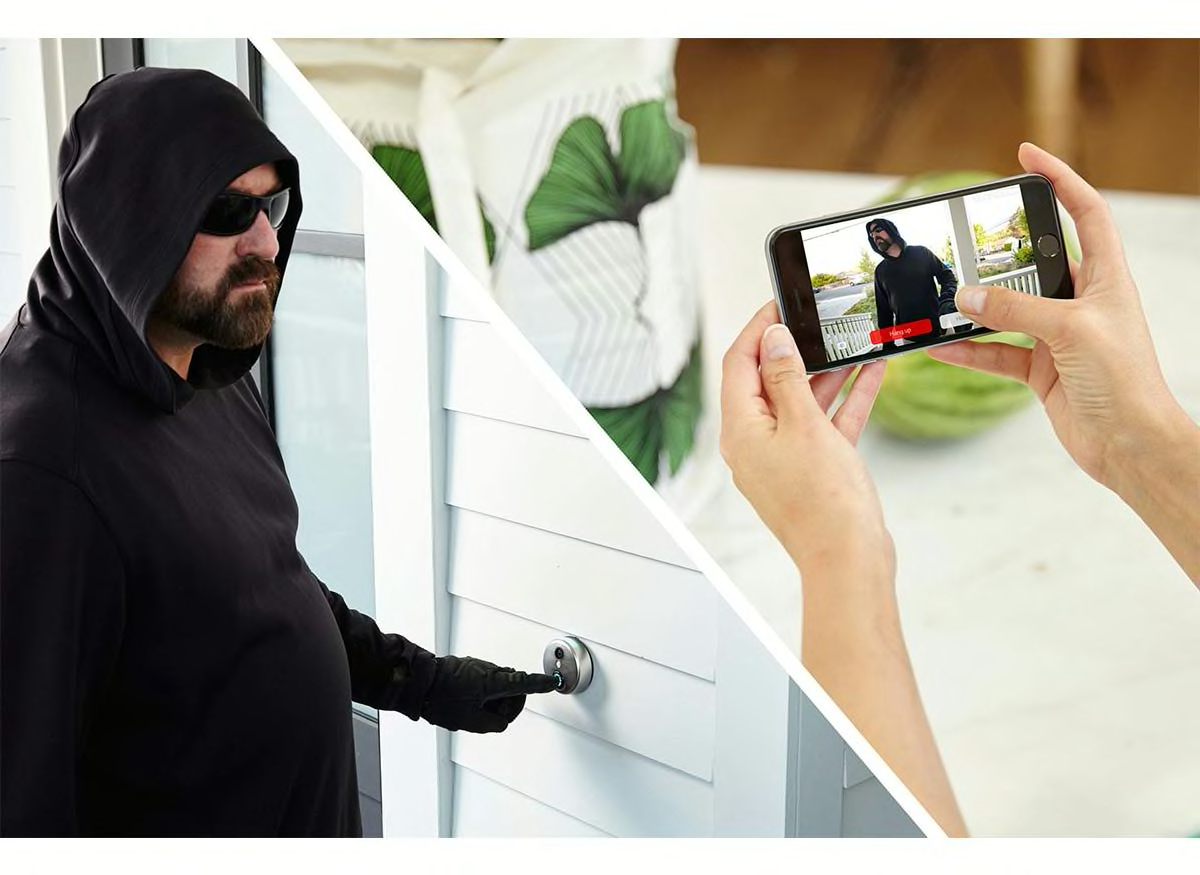
Smartphone Alerts
Security cameras and doorbell cameras will send alerts to your phone when they detect motion and doorbell rings. Some cameras also analyze footage to send alerts for people, faces, animals, vehicles, and even packages. The frequency and sensitivity of alerts can usually be adjusted in the app.
PHOTO: SKYBELL
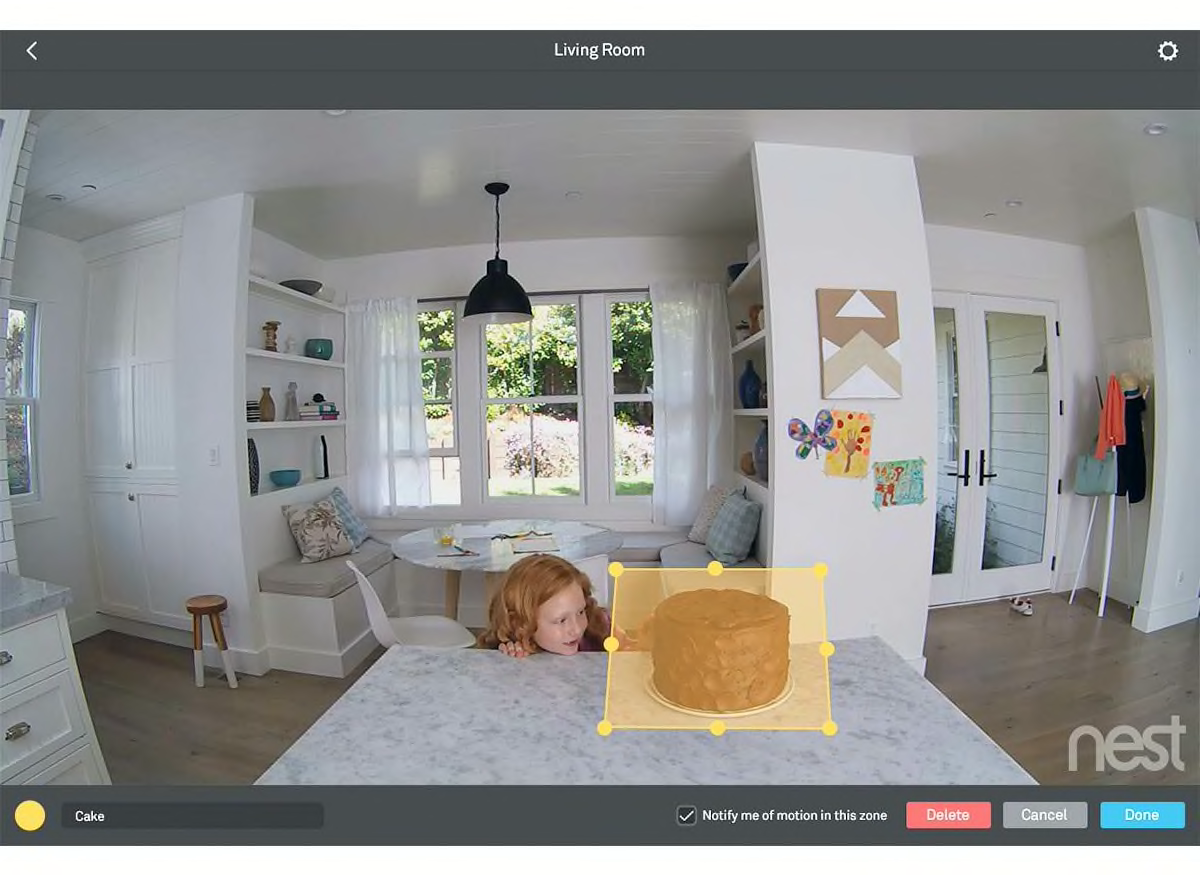
Activity Zones
Most cameras offer activity zones (also called motion zones), where you can select a portion of the camera’s field of view to watch for motion instead of the whole field of view. This feature is especially useful to block out annoying repetitive alerts from areas such as busy streets.
PHOTO: NEST

Two-Way Audio
All doorbell cameras and most security cameras offer two-way audio, allowing you to hear and speak with people in front of the camera.
PHOTO: RING
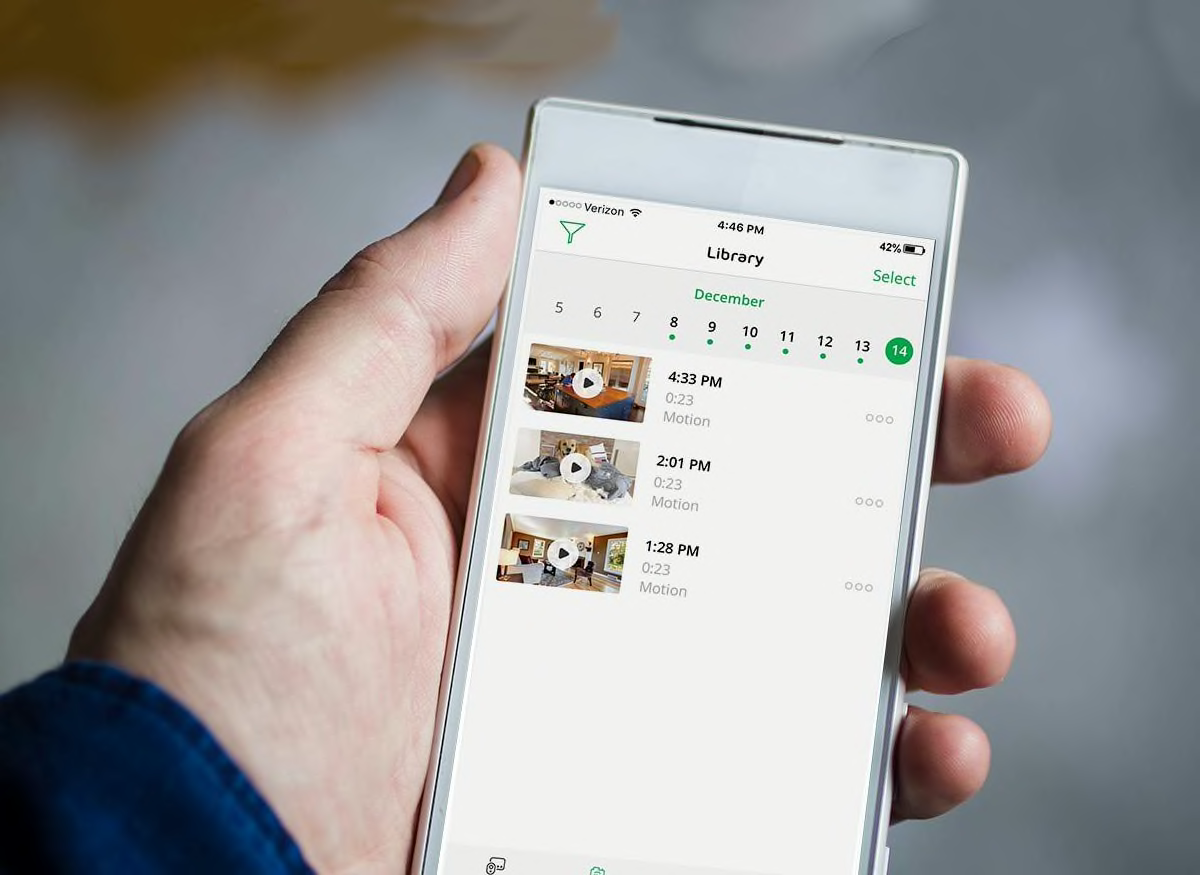
Cloud Video Storage
Most cameras store footage in the cloud, so it’s safely backed up and available from anywhere, but it usually requires a monthly fee of $1 to $30 per month.
PHOTO: NETGEAR
Smartphone Alerts
Security cameras and doorbell cameras will send alerts to your phone when they detect motion and doorbell rings. Some cameras also analyze footage to send alerts for people, faces, animals, vehicles, and even packages. The frequency and sensitivity of alerts can usually be adjusted in the app.
PHOTO: SKYBELL
Activity Zones
Most cameras offer activity zones (also called motion zones), where you can select a portion of the camera’s field of view to watch for motion instead of the whole field of view. This feature is especially useful to block out annoying repetitive alerts from areas such as busy streets.
PHOTO: NEST
Two-Way Audio
All doorbell cameras and most security cameras offer two-way audio, allowing you to hear and speak with people in front of the camera.
PHOTO: RING
Cloud Video Storage
Most cameras store footage in the cloud, so it’s safely backed up and available from anywhere, but it usually requires a monthly fee of $1 to $30 per month.
PHOTO: NETGEAR
The Best Time to Buy Home Security Cameras
Once you’ve picked out the perfect security camera or doorbell camera for your home, check its price at online retailers, local electronics stores, and even big-box hardware stores. The best time of year to buy these devices is during a holiday shopping season because that’s when we usually see the steepest discounts, with some merchants slashing prices by up to 50 percent. Your next best bet is one of Amazon’s sale events (such as Prime Day), followed by other sale holidays, such as Memorial Day and Labor Day.
















